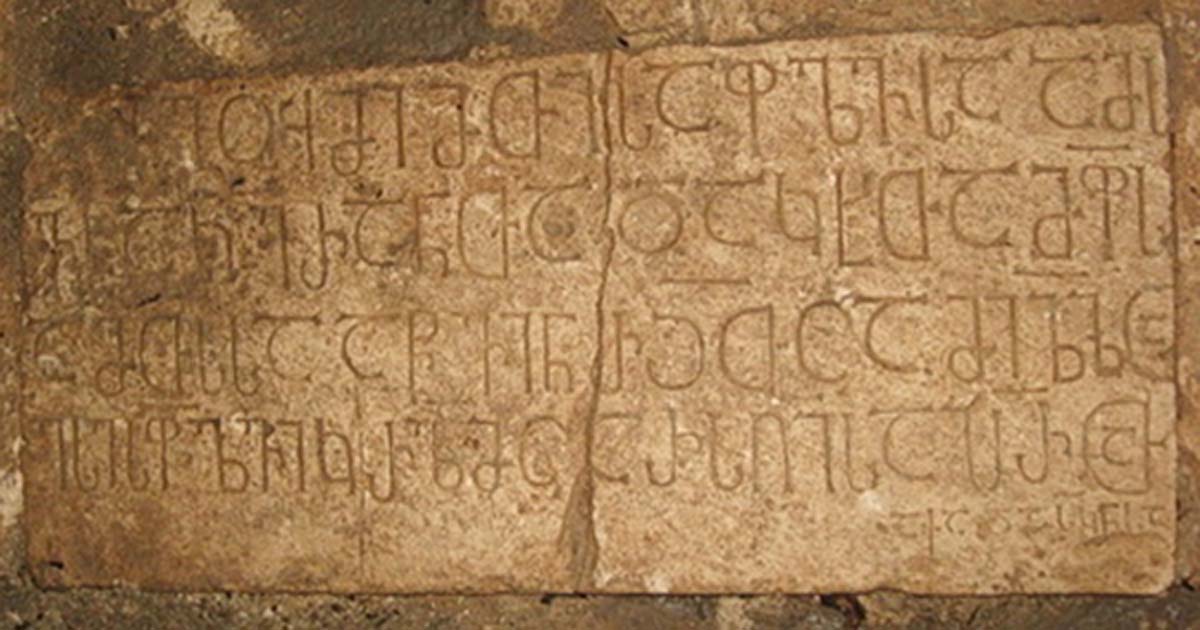11th Century King’s Tomb Unearthed at Dilapidated Monastery in Georgia
Historians in Georgia made a surprise discovery during restoration work, when they happened upon the location of the tomb of a renowned king from the 11 th century. Workers uncovered the gravestone at an abandoned monastery and it hosted an inscription that signified its regal occupant.
King’s Resting Place
The team of conservators uncovered the king’s burial place at the St. John the Baptist Monastery in the village of Kalauri in eastern Georgia’s Gurjaani Municipality this week, as reported by Agenda.ge. Just who the crypt belonged to was revealed in a lengthy epitaph that named the entombed as King Kvirike.
- Queen Tamar: The Confident Female Ruler of the Georgian Golden Age
- Wine used in Ritual Ceremonies 5000 Years Ago in Georgia, the Cradle of Viticulture
- 7th century BC inscription in Georgia may rewrite history of written language

The discovery at the Kalauri village complex was made during ongoing restoration works. (Credit: Cultural Heritage Agency)
From the epitaph and historical evidence, the historians have asserted that it refers to King Kvirike III, also known as Kvirike the Great, of the 11th century Kakheti-Hereti kingdom.
According to a statement by the National Agency for Cultural Heritage Preservation of Georgia statement and reported by Agenda.ge, the epitaph contained an "extensive text in Asomtavruli [script]” referring to the monarch. Asomtavruli is one of three scripts that are used to represent the Georgian language, although it is now obsolete in everyday use and only used in religious contexts.
Kvirike III’s Reign
Kvirike III ruled as king within the eastern Georgian feudal system, governing the kingdom of Kakheti-Hereti from 1014-1037 or 39. Although his reign got off to an uncertain start, later he was successful in uniting the kingdoms of Kakheti and Hereti and for a time the region became autonomous from the rest of Georgia.
Kvirike initially came to rule the region as successor to his father, David, thus becoming a prince and also the chorepiscopus (a Christian clergy position that is ranked below Bishop) of Kakheti. One presumes that his religious positions are what guaranteed his place of rest in the monastery.
At the time, Georgia as a whole was governed by the Bagrationi Dynasty, a monarchal dynasty that would play a part in the governing of Georgia until the 19 th century. The Bagrationi patron of the day, King Bagrat III, rejected Kvirike’s succession, took him prisoner and claimed Kakheti. When Bagrat III died, Kvirike not only reclaimed his crown, but took charge of the neighboring province of Hereti too, thus forming the combined and independent kingdom of Kakheti-Hereti.

Coin of Kvirike III, arabographycal type without Georgian letters (CC BY-SA 4.0)
The region prospered under his rule and he formed his capital in Telvadi, building a palace at Bodoji. He later formed coalitions with Bagrat IV and others, successfully defending the country against various invaders, including that of the Byzantine Empire. According to 17 th century Georgian historian, Vakhushti, he was ultimately assassinated by a slave he had taken, as revenge for his killing of the Alan king Urdure who had attempted an invasion.
After his death, the Kakheti-Hereti Kingdom lasted as a sovereign entity until 1104, when Georgia’s King David IV merged it with his united Georgian kingdom.
- Monk Lives Life of Solitude on This 131-Foot-Tall Rock with a 2,000 Year History
- Bizarre Burials Uncovered in Ancient Georgia Cemetery Include Headless Skeletons and Decapitated Skull on a Plate
- The Ancient Kingdom of Colchis: A Legendary Land of Plenty, Conflict, and the Golden Fleece

The burial place was unearthed in the southern section of the monastery. (Credit: Cultural Heritage Agency)
The Tomb
The recently re-discovered tomb that has housed the remains of King Kvirike III for around a millennium, was constructed from cut stone, and is situated in the southern section of the 9 th century monastery, reports Agenda.ge. The discovery was made after two years of reconstruction work had already been completed at the previously deteriorating religious site. Such a discovery makes the restoration effort and investment all the more worthwhile.

St. John the Baptist monastery principal church in early stages of restoration (LikeGeorgia)
The 9th century monastery complex is located in a forest outside Kalauri village, and includes the St. John the Baptist church and the residence of the chorepiscopus, amongst other buildings.
The epitaph is scheduled to be analyzed by experts, before further archaeological delving is started at the site by the Cultural Heritage Agency.
Top image: The epitaph of King Kvirike III’s tomb features text in Asomtavruli script. (Credit: Cultural Heritage Agency)
By Gary Manners



















